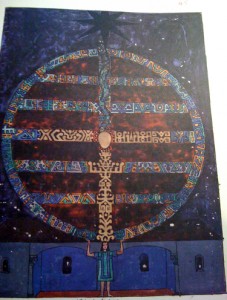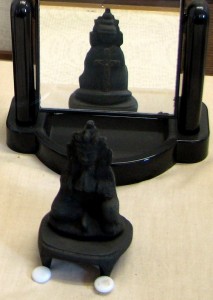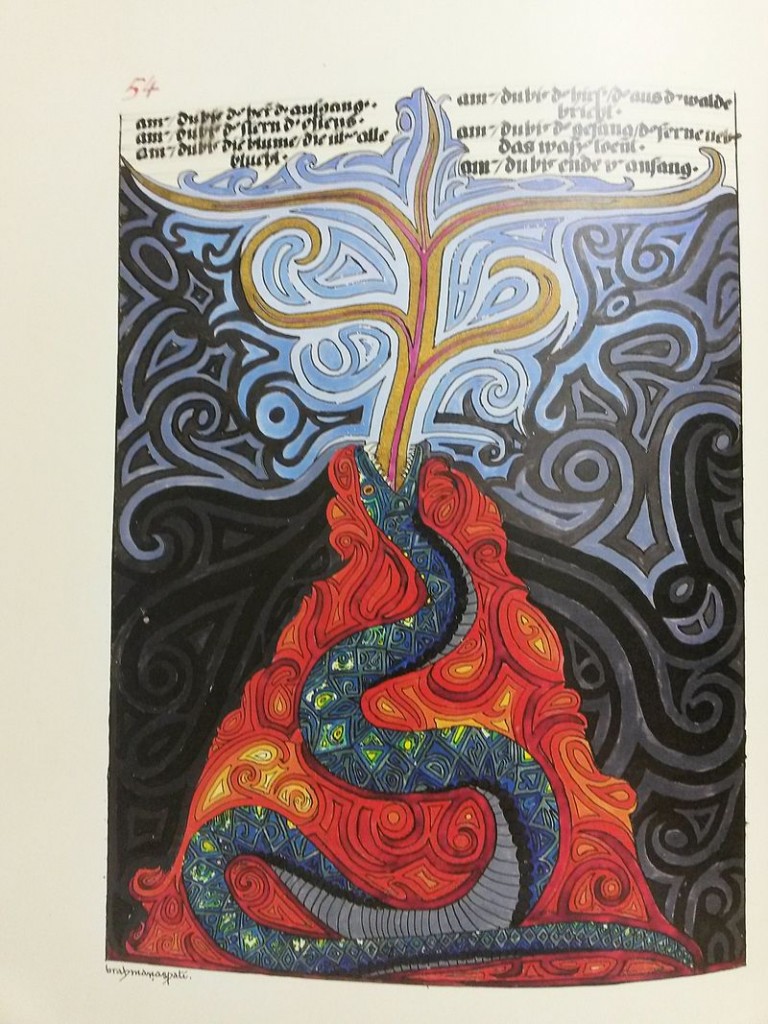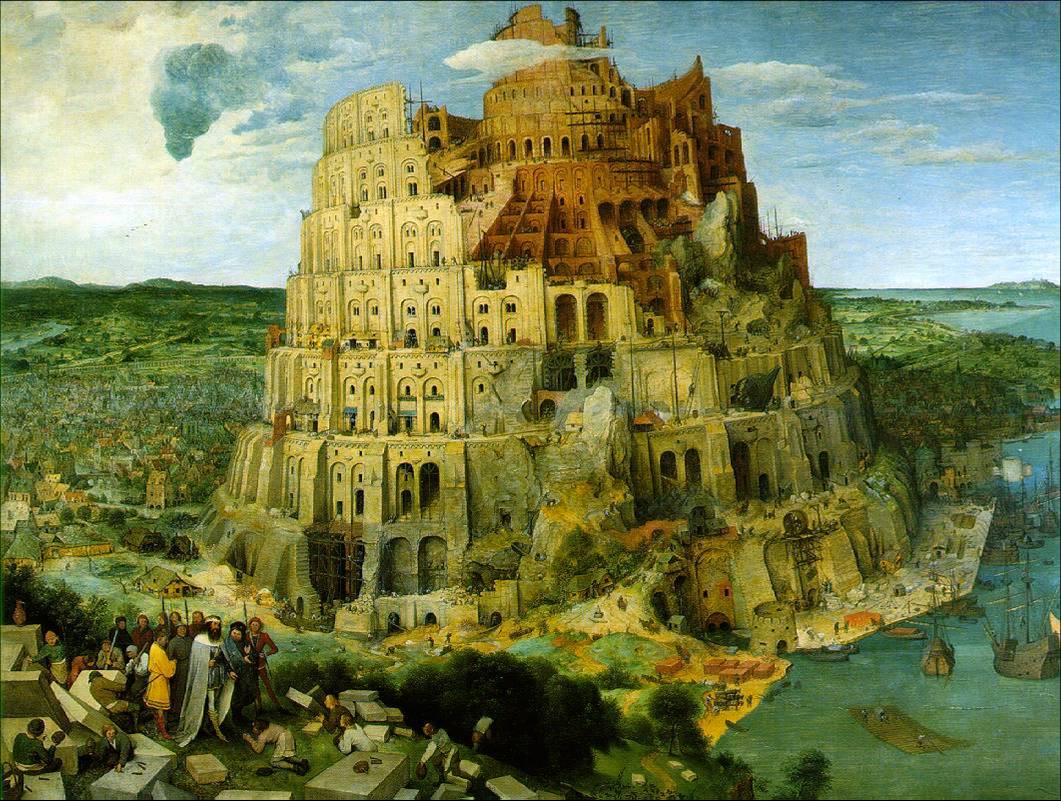There are several points in the Red Book where Jung discusses meaning and symbol, all of them suggesting to me a radical understanding of meaning in which Jung was implicitly before his time. Jung recognises that meaning is experienced in our bodies, that it emerges over time, and that meaning needs to be separated from belief. These are insights that can now be more strongly supported using the findings of neuroscience (particularly the differing roles of the brain hemispheres) and the embodied meaning theory of George Lakoff and Mark Johnson: but Jung was a pioneer who (at least as I interpret his text) implicitly understood the basis of these developments.
Perhaps the most interesting episode in the Red Book where Jung engages with issues of meaning is his conversations with Ammonius, the Anchorite. Jung encounters Ammonius as a solitary in the desert, devoting himself to endlessly reading the scriptures and finding ever new meanings in them. But typically, Jung’s relationship with Ammonius changes in the course of his two main encounters with him. Jung starts off as a disciple respectfully approaching the master, but ends up being thought of as Satan and lunged at by Ammonius. Jung, like the rest of us, can learn from his inner figures, but can also challenge them and teach them, even suffer reactions from them, as he recognises their limitations.
As Jung writes of Ammonius
He wanted to find what he needed in the outer. But you find manifold meaning only in yourself, not in things, since the manifoldness of meaning is not something that is given at the same time, but is a succession of meanings. The meanings that follow one another do not lie in things, but lie in you, who are subject to many changes, insofar as you take part in life. (p.262)
I take this to mean that although Ammonius sought multiple meanings in scripture, he still assumed that the meanings lay in the scripture. His solitary studies in the desert reinforced that, as he became more abstracted and ceased to relate to others. But the meanings he was looking for lay in himself. Jung especially stresses the temporal aspect of this recognition. “Meaning is not something that is given at the same time”, as it would be, not only to scripturally-obsessed believers, but also analytic philosophers and naturalistic scientists, who take meaning to consist in a relationship between words and an actual or hypothetical reality, processed in a way that takes no account of the temporal aspects of our experience of meaning. But meaning takes time, and depth of understanding comes from the linking of experiences over time to ever-richer symbols. Meaning is experienced physically, in a gestalt way, through our right brain hemispheres in a way that depends on gradually accrued experience coming together, not just abstractly and hypothetically through the left. The very metaphors we use to describe the process take time: things “sink in”, or we “get our heads around” something. By “taking part in life” we can enrich that process, as meaning depends on experience rather than only on abstraction.
At the final moment when the previously respectful Jung gets lunged at and called Satan, Ammonius switches from right hemisphere receptivity to left hemisphere suspicion. At one moment he is open to Jung’s suggestion that he might find more of the meaning he seeks by returning to human society, but the next he shuts down. Becoming confused, he blames his confusion on Jung. This can stand for any occasion when a self-sufficient absolute belief is challenged, and the problem created by the challenge is projected onto the messenger by a person who feels threatened and defensive.
Elsewhere, Jung discusses the richness of experienced meaning in relation to symbols. For him, the distinction between a sign and a symbol is important. The sign merely represents, but the symbol connects with the wider gestalt experience of meaning.
The symbol is the word that goes out of the mouth, that one does not simply speak, but that rises out of the depths of the self as a word of power and great need and places itself unexpectedly on the tongue. It is an astonishing and perhaps seemingly irrational word, but one recognises it as a symbol since it is alien to the conscious mind. If one accepts a symbol, it is as if a door opens leading into a new room whose existence one previously did not know. (p.392)
Perhaps the most startling symbols are those of the kind Jung encountered in his visions (such as Ammonius himself, or the Tree of Life discussed in the previous blog), or that we otherwise encounter unexpectedly in dreams. What Jung particularly conveys throughout the Red Book is the importance of exploring the meaning of such symbols in a provisional space of meaning, held apart from any concerns about what we believe.
However, it seems that any word (or visual image, or sound) can be a symbol that evokes a range of associations, connecting more deeply to our embodied experience through the emotions. Signs, by contrast, are supposed to merely denote something within a certain model of belief: think of numbers, for example. But of course, signs are merely dried out symbols or dead metaphors that have been over-handled by the left hemisphere. They still depend on their connection to a set of embodied associations to mean anything at all for us, however clipped and controlled they may have become.
Obviously we need words, and we need both signs and symbols. the challenge is to use the words for their limited contextual purposes and then (like the Buddha’s raft once it has crossed the river) let go of them. In this final passage that I will quote, Jung directly links the balanced use of words to the Middle Way, and recognises the practical reasons for turning words into beliefs: as long as those beliefs are also provisional.
The word is the guide, the middle way which easily oscillates like the needle on the scales. The word is the God that rises out of the waters each morning and proclaims the guiding law to the people.. Outer laws and outer wisdom are eternally insufficient, since there is only one law and one wisdom, namely my daily law, my daily wisdom. The God renews himself each night. (p.393)
Previous blogs in this series:
Jung’s Red Book 1: The Jungian Middle Way
Jung’s Red Book 2: The God of experience
Jung’s Red Book 3: The Tree of Life
Picture: Mandala from Jung’s Red Book by Joanna Penn (CCA 2.0)




